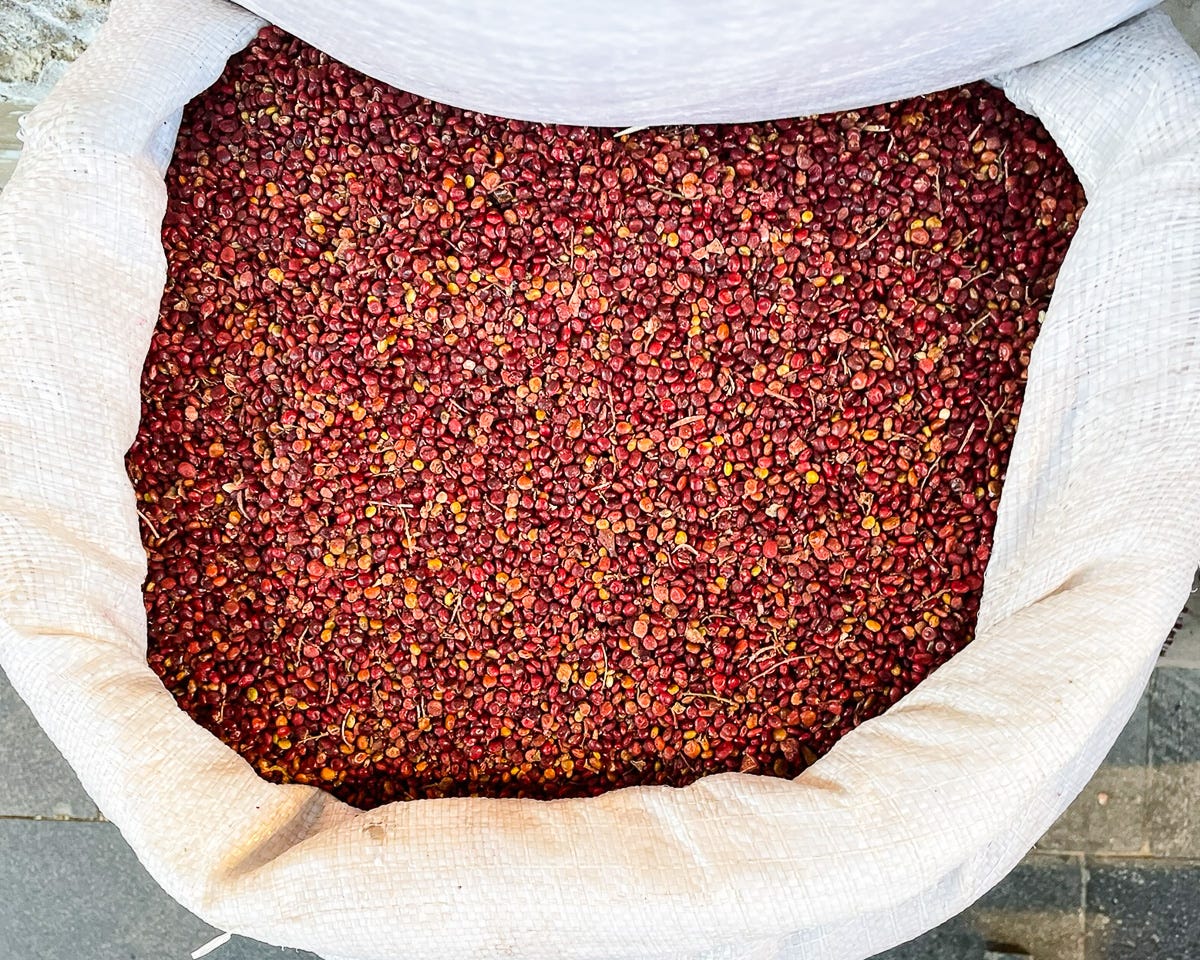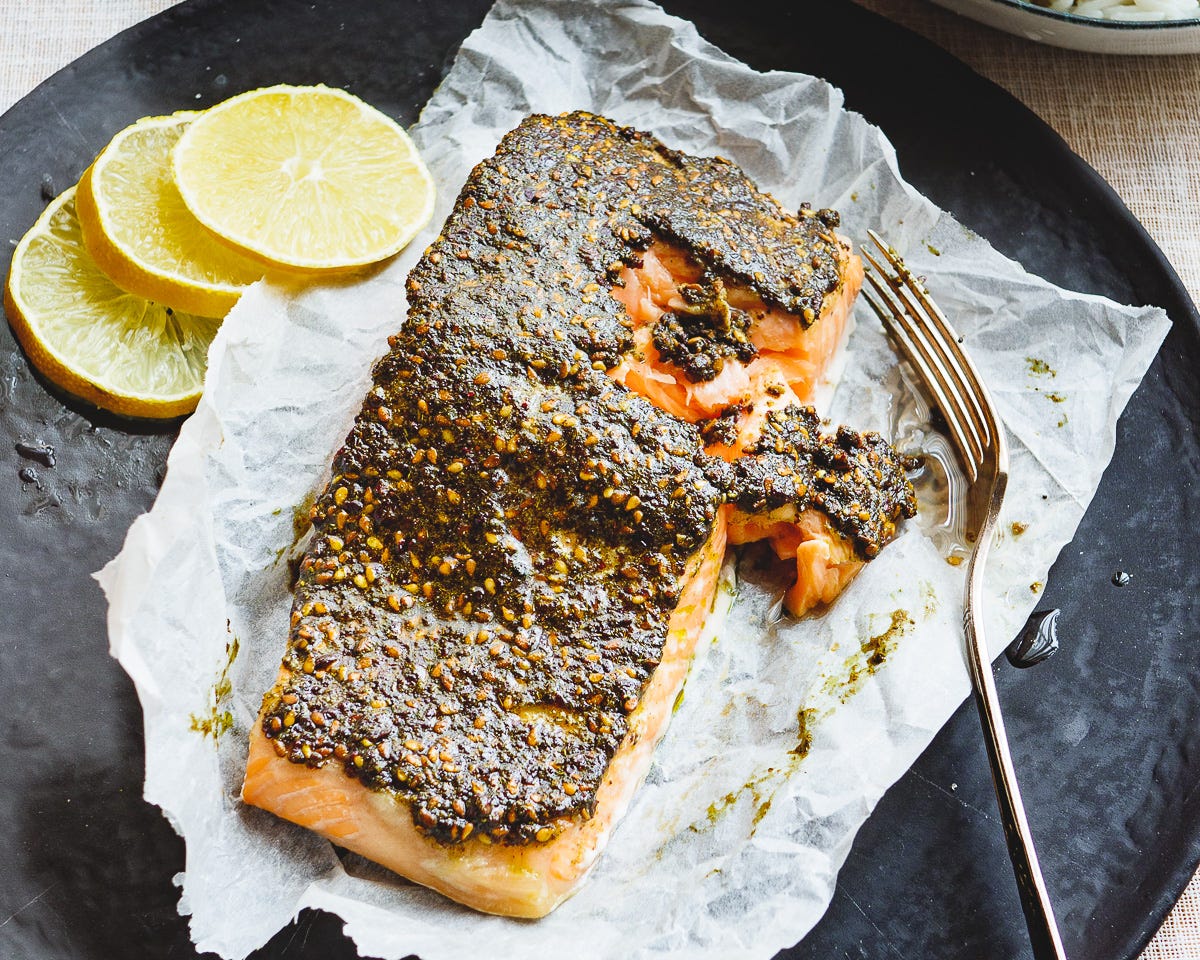Dear reader,
I’m writing this from my kitchen, where the rain is pouring down so loudly on the balcony roof outside, I’ve had to increase the music volume. Winter has arrived in Istanbul, at last.
It’s only been a couple of days since I returned from Mardin, and I’m still digesting the trip. It’s not every day you get to visit multiple sites dating back literally thousands of years, some of them until now seemingly unreal places I’d only heard about in biblical history at school. Impressive efforts have gone into keeping the old towns and architecture alive and relevant, from monasteries and churches to mosques. This trip was more about the sightseeing than food (though I did return with a cookbook of local Syriac food), but I’ll certainly return to it in more detail in a future newsletter.
This week, I instead wanted to focus in on an ingredient that’s dear to my heart. Sumac. So embedded with the Middle Eastern cuisines, but what is it really? How do you use it? I hope this short and sweet introduction will give you some ideas to bring into your kitchen. Later this week, you’ll also get my take on the perhaps most iconic recipe these days featuring sumac.
Before diving into the world of sumac, I wanted to let you know that subscriptions are now 20% off for the first year. This offer will run until the end of the year, and gift subscriptions are also available. Paid subscriptions are entirely optional, but gets you access to new recipes every week and helps support the time and effort it takes to write these newsletters and recipes. You can check out the archive of paid subscription recipes here.
I wish you all the best for the week ahead.
Vidar
Before there was lemon, there was sumac.
Bright red in colour and tart in flavour, it’s been a widely used spice since ancient times. In classical Rome, before the arrival of lemons, it was the favoured way of introducing sour flavours into dishes. While lemon has long since taken over as the favoured sour ingredient, it remains most widely used in areas where lemons remained rare for longer.
What is sumac?
Sumac is a spice made from the red fruits of sumac shrubs, which grow in warm regions worldwide and belong to the same family as mangoes, cashews and pistachios. The fruits are small, leading many to call them berries, though botanically speaking, they’re fruits. The sour flavour comes from malic acid, of which sumac has a fairly high concentration.
As a spice, it’s common throughout the Middle East, Turkey, Iran and South Asia.
The fruits are dried before use and can be used whole or ground, though the latter is most common. Kept whole, they impart a mild flavour, so generous amounts are usually used. Ground, they turn a deep, purplish red, and take on a complex, sour flavour with fruity undertones.
While we often think of spices as season-less ingredients, this is not the case for sumac. At least if you can get it fresh. In September, the year’s new batch starts arriving at the spice market in Istanbul. At this time, the sumac is more coarsely ground and still moist, giving a fresher and fruitier flavour than the completely dried up powder you usually get from packets. If you happen to visit these parts of the world in the months following the new season, I highly recommend bringing some back home. If vacuum packed, it’ll keep fresh and moist for a long time.
Though a new ingredient to many Europeans, sumac’s historically been used all across Europe. In medieval Europe, it was popular among the wealthy, apparently appearing in a number of popular recipe collections from this era. An early version of the Gazan dish sumaqiyya, a meaty stew where sumac is the star ingredient, was particularly popular.
How to use sumac
The distinctive tart flavour means sumac can be used in a range of ways. Though not quite as versatile as lemon juice, its use is somewhere between that of lemon and a more typical spice.
Sumac is great sprinkled on salads. I personally find it works particularly well with stronger-flavoured leaves, such as rocket (arugula), or with sturdy vegetables such as carrots and turnips. It’s also brilliant with onions – I can’t imagine eating liver without an onion sumac salad alongside, for example. That said, it works well with milder flavoured vegetables too – the popular fattoush salad is a case in point.
While it can be used with roasted vegetables as well, I often find za’atar to be a better choice with salads featuring roasted vegetables. Incidentally, sumac is one of the three spices that makes up the za’atar blend, the other two being za’atar herb and roasted sesame seeds. The two spices can also be used together to great effect.
Like lemon, sumac is excellent in marinades. It works particularly well with skin on chicken or fatty fish like salmon, where it complements the flavour of the fat and meat unusually well. This is one of the secrets behind musakhan, one of the most important dishes in the Palestinian kitchen, and for which I’ll send you my go-to recipe later this week.
With red meat, I find it works best in stews, where it works to balance flavours as well as impart its own fruity undertones.
It’s also common to sprinkle sumac over hummus. The tanginess works to contrast the tahini and chickpeas really well.
While best known for its culinary uses, sumac has historically been used in traditional medicine, textile dying and leather tanning as well. In North America, indigenous peoples brewed a kind of pink beer from sumac fruits, a tradition that’s also been embraced by more modern American microbreweries.
Ground sumac is widely available in international food shops, where you can find it in the spice aisle. Recipes featuring sumac often use a generous amount of it, so finishing a packet is usually never an issue.
Turkish sumac onions
These are the Eastern Mediterranean equivalent of the pickled red onions so prevalent in the West, but I dare say rather better. Sumac and salt marry incredibly well with onion to make the perfect accompaniment to any fatty meats, be it fried liver or shish kebabs.
Roast sumac chicken
If you’re looking for a very simple way to up your roast chicken legs, this should be on your list. There’s so much flavour here, you’ll only need the simplest of sides.
Za’atar baked salmon
Sumac is one of the three ingredients that make up the core of spice mix za’atar, but they also work well together. Here, it helps bring the spice mix to the right balance of tartness to balance the fattiness of salmon. One of my favourite ways to enjoy pink fish!
Fattoush
This salad is a staple of Levantine cuisine from Syria to Lebanon and beyond. There’s no one recipe, but sumac plays an important part in bringing out the right flavour in all of them.
🔜 Coming Friday:
Musakhan – Palestinian chicken with sumac onion flatbread
By some hailed as the national dish of Palestine, and it’s easy to see why. The sumac onion flatbread is so incredibly moreish I could eat it on its own, with nothing else, but it’s together with the chicken it really comes together as one of the brilliant culinary inventions of mankind.
This recipe will be for all subscribers – free and paying – and will hit your inbox on Friday or over the weekend.
















Spices... what would we do without spices?
And as fate had it, yesterday evening I (re)watched "A Touch of Spice", AKA "Politiki kouzina". A wonderful movie from 20 years ago, about a Greek family living in Constantinople and expelled from Turkey on the early 60s. But the love for the time in ''Poli'' remains. A Must See, in my humble opinion.
Betty from the Netherlands.